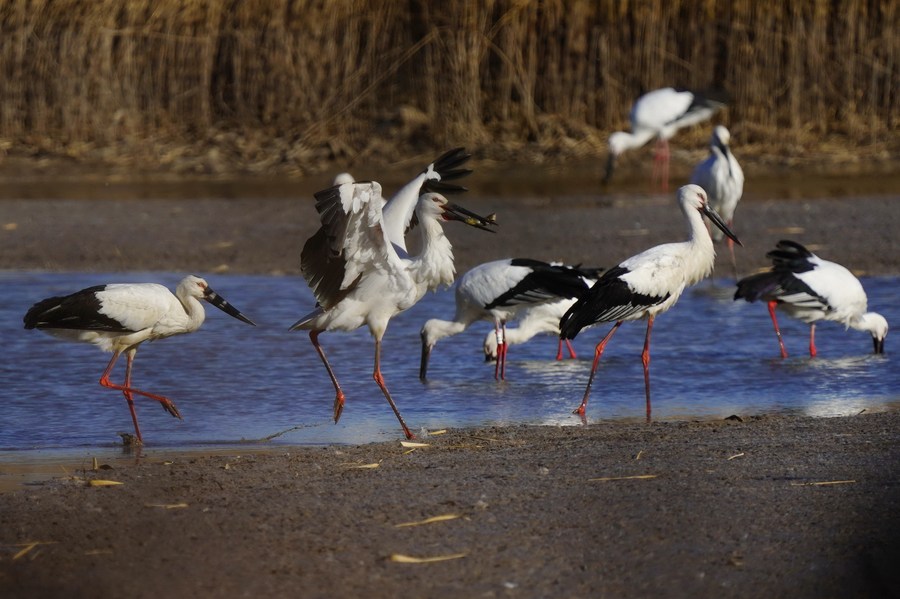China is winning "World Cup" for nature conservation: senior IUCN official

A Francois' leaf monkey is seen with a cub in the Mayanghe National Nature Reserve in Guizhou Province, southwest China, March 16, 2022.(Xinhua/Yang Wenbin)
"I've been working with Chinese partners and colleagues for more than 20 years, and I know how beautiful China is, how rich China's biodiversity is, and how important nature conservation in China is for eco-civilization, for sustainable development, for all the important foundations of success, health, and wellbeing," he said.
MONTREAL, Canada, Dec. 12 (Xinhua) -- China has made one of the biggest global contributions to the protection of nature, a senior representative of the International Union for Conservation of Nature (IUCN) told Xinhua recently during the second part of the 15th meeting of the Conference of the Parties (COP15) to the UN Convention on Biological Diversity.
"For nature conservation, China is winning the World Cup," Hardcastle said.
Countries worldwide can draw on China's expertise and experience in this area, James Hardcastle, head of IUCN's protected and conserved areas team, told Xinhua on the sidelines of a ceremony marking the addition of 16 new protected areas to the intergovernmental organization's "Green List."

Photo taken on Feb. 25, 2022 shows Yangtze sturgeons at a breeding base for rare fishes in the Three Gorges Reservoir in southwest China's Chongqing.(Xinhua/Tang Yi)
The IUCN Green List honors successful nature conservation worldwide. As of December 2022, China has had the second-most protected and conserved areas on the list, with a total of 77 sites. 11 out of 16 newly-listed or relisted sites announced on Saturday are in China, including Qianjiangyuan National Park in the eastern province of Zhejiang and the famous Huangguoshu Scenic Area in southwestern province of Guizhou.
"I've been working with Chinese partners and colleagues for more than 20 years, and I know how beautiful China is, how rich China's biodiversity is, and how important nature conservation in China is for eco-civilization, for sustainable development, for all the important foundations of success, health, and wellbeing," he said.
Noting that China had invested in thousands of protected areas, he said that with "people working, day in, day out, to restore, protect, and manage" these sites, China had amassed an enormous amount of experience.

A flock of oriental white storks forage during their southward migration at Caofeidian wetland in Tangshan, north China's Hebei Province, Nov. 14, 2021. (Xinhua/Yang Shiyao)
Hardcastle has listed three main areas where China leads in nature protection and conservation: visitor management, the use of technology such as acoustic monitoring and camera trapping, and the capacity for scientific research on these protected areas.
He shared his experience of visiting Mount Huangshan, which is on the Green List, and is also a site of the United Nations Educational, Scientific, and Cultural Organization (UNESCO) World Heritage.
The site was very well-organized and managed, safe and secure, he said, adding that, "the impact on the environment is minimized."
"We cannot do anything but support, and work, and help, and learn from China on how it is managing nature, conservation areas, national parks, nature reserves, and so on," he said.

A giant panda climbs the trunk of a tree at Shenshuping base of China Conservation and Research Center for Giant Pandas in Wolong National Nature Reserve, southwest China's Sichuan Province, April 24, 2022. (Xinhua/Xu Bingjie)


